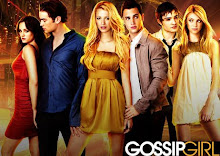Start of a simple Narrative: A couple wake up, go downstairs to breakfast, and do not realise that they are being watched.
Continued...: A Muslim terrorist catches the lady of the couple and keep her in a room with one of her colleagues threatening to kill her: we assume this is the main issue. But then we realise that the male side of the couple has lead one of the terrorists straight to the prime minister, and she has a bomb. He manages to get on the good side of her and rescue his wife, but her is shot and killed.
Which 'standard narrative conventions' does this use?
1) Levi-Strauss: This narrative structure focuses on binary opposites, such as the obvious contrast between the evil act of terrorism and the loving good-nature of the couple making breakfast, going about everyday life. There is also the binary opposite of normal everyday actions and extreme, extra-ordinary action.
2) Todorov theory: We begin with equillibrium - the couple making coffee - move to disruption - the wife is captured and held ransom, and the prime minister put under threat - then end with equillibrium - the terrorists are captured, the wife returned to safety with the husband and the prime minister safe.
3) Props characters: The captured wife is the damsel in distress, the terrorists are the villains and the husband is the hero.
Why do most stories end happily?
The producers of a TV series will want its audience to go away with a positive overall feel about the programme - if this is to be acheived, the main characters that they see again and again and have grown to know and like have to survive. If it ends with distruction and death, the audience will go away feeling sad, and may not return to the programme. They must be scared/excited during, but not at the end. There must be a feeling of resolve and content.
The Beginning of a Narrative
The beginning of Spooks is classic way to begin a TV drama: 'this feels like the beginning of a narrative'. The equillibrium of the beginning scene, of making coffee in the neutral setting, gives the audience a sense of security and sets them up for what is about to come. By getting an idea of happiness and order, once it is disrupted, the audience can empathise and feel more with the characters, wanting it to get back to how it was to begin with.
Exploring Narrative Structures
Single Drama/Film: Margaret
-Todorov's narrative structure - equilibrium, disruption, equilibrium - usually with classic Levi-Strauss binary opposites such as good and evil characters.
Two-Nighter: Trial & Retribution
-Again, Todorov's equilibrium, disruption, equilibrium - but spread out over the two episodes, ending the first with the peak of the disruption to be resolved at the end of the second half. This would still, like with single dramas, include binary opposites that are established in the first half of the drama.
Soap (continuing drama): EastEnders
-As the soap is ongoing, we are constantly presented with the equillibrium, or norm, of the setting, so there is constant disruption that does not need to be solved for weeks. Not so much emphasis on binary opposites, but often stereotype/archetype character roles such as hero, wimp, damsel in distress...
Serial: Bleak House
-equillibrium, disruption, equillibrium - but within this there will be sub-disruptions culminating in the return to order at the end of the series; like a short soap.
Anthology series (based on diff. characters): Skins
-The characters each go through their own disruptions and are resolved into equillibrium at different times, ALTHOUGH as there are enough characters to do so, some characters never reach equillibrium and remain in disruption until (if at all) the last episode - can carry on to next season.
Long-form serial drama: Lost
-Usually an underlying narrative which carries on throughout the series, with different narratives in single episodes which can take about two or three episodes to resolve, much like the 'serial' (Bleak House) over a longer period of time.
Long-form serial drama with narrative experimentation: 24
-As before, with extreme binary opposites in some cases and an individul take on the normal drama - ie. a monatge of storylines coming together gradually.



